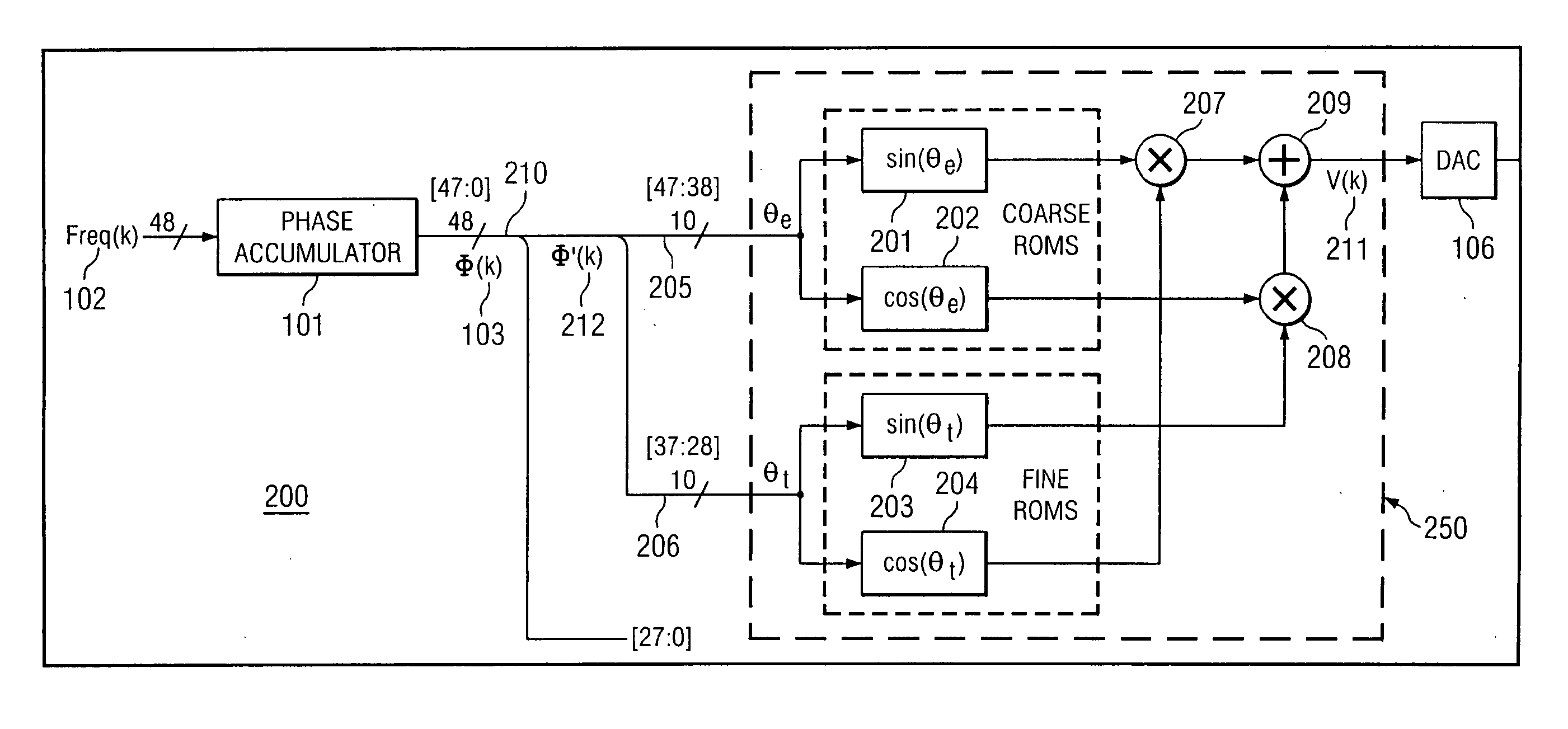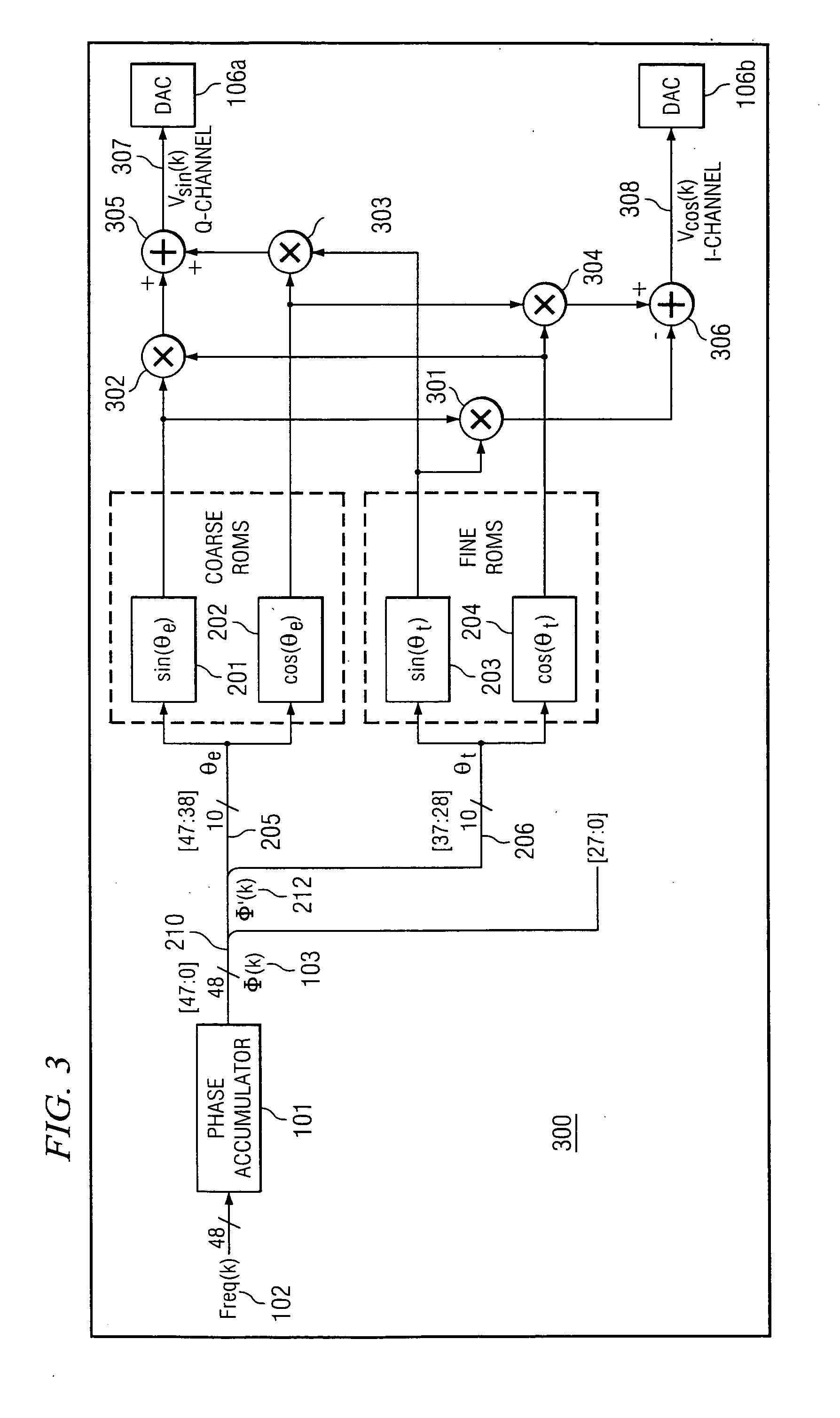Numerically controlled oscillator and method of operation
a technology of numerical control and oscillator, applied in the field of numerical control oscillator, can solve the problems of reducing the degree of error in digital amplitude signal, requiring appreciably large amount of memory, etc., and achieve the effect of reducing the total amount of memory and reducing the amount of memory
- Summary
- Abstract
- Description
- Claims
- Application Information
AI Technical Summary
Benefits of technology
Problems solved by technology
Method used
Image
Examples
Embodiment Construction
[0010] Referring now to one representative embodiment shown in FIG. 2, numerically controlled oscillator 200 receives input digital signal 102 (Freq(k)) to control the operating frequency of the oscillator. Input digital signal 102 is communicated using a bus having a bit width of 48-bits. Input digital signal 102 is accumulated by phase accumulator 101 to generate phase signal 103 (Φ(k)). Phase signal 103 is communicated on bus 210 that has a width of 48-bits.
[0011] As shown in FIG. 2, phase signal 103 is truncated. Specifically, the lines of bus 210 corresponding to bits [27:0] are terminated without connection to phase-to-amplitude converter 250. Truncated signal 212 (Φ′(k)) corresponds to bits [47:28]. The truncation occurs according to the desired level of accuracy associated with the subsequent phase-to-amplitude conversion. In an alternative embodiment, all of the bits from phase accumulator 101 could be used for the phase-to-amplitude conversion. As will be discussed in gre...
PUM
 Login to View More
Login to View More Abstract
Description
Claims
Application Information
 Login to View More
Login to View More - R&D
- Intellectual Property
- Life Sciences
- Materials
- Tech Scout
- Unparalleled Data Quality
- Higher Quality Content
- 60% Fewer Hallucinations
Browse by: Latest US Patents, China's latest patents, Technical Efficacy Thesaurus, Application Domain, Technology Topic, Popular Technical Reports.
© 2025 PatSnap. All rights reserved.Legal|Privacy policy|Modern Slavery Act Transparency Statement|Sitemap|About US| Contact US: help@patsnap.com



